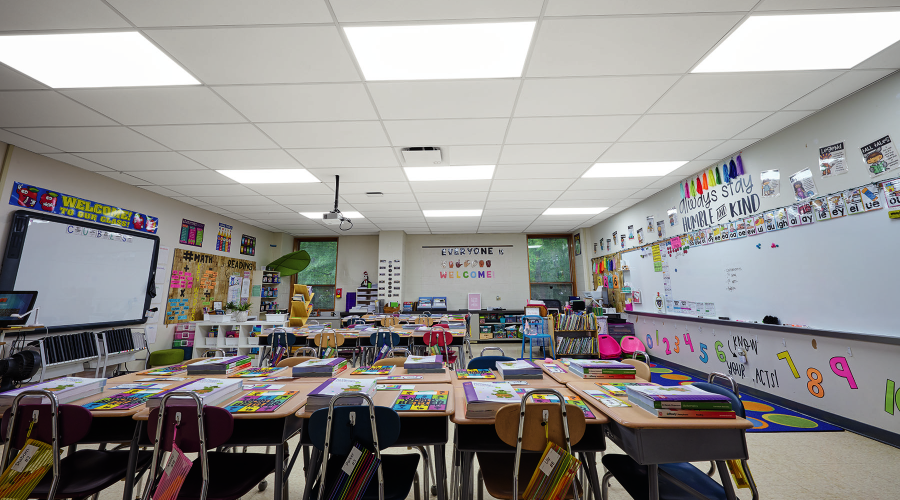Healthy IAQ: Control Contaminants
After the HVAC system has reached peak operating condition and a proper maintenance plan is in place, managers need to address source control of contaminants. IAQ experts agree source control is the only completely effective way to prevent pollutants from entering indoor air. But total eradication of indoor air contaminants often is not feasible or practical. A more realistic goal is to use products and processes that emit low levels of volatile organic compounds (VOCs).
While specifying low-emitting products throughout a facility might be an organization’s ultimate goal, managers first can address products that cover larger surface areas and have a greater impact on IAQ. Flooring is a primary example, as it covers every inch of a facility. Like all products, the amount of VOCs a flooring system off-gasses depends on the type.
Low-emitting air filters, ductwork and duct liners are also important to ensuring good IAQ. If these items are not low-emitting, chemicals released from these products will be circulated throughout the building, polluting the indoor environment.
Fortunately, more manufacturers are realizing the benefits of including emissions testing in their research-and-development and quality-control programs. Also, low-emitting, third-party-tested-and-certified materials are becoming more readily available.
Managers have plenty of resources available for specifying low-emitting products. The GREENGUARD Certification ProgramSM, for example, offers a free guide for tested and certified low-emitting products and materials. These products all meet indoor air emissions standards based on established requirements used by the U.S. Environmental Protection Agency, among others.
Poor IAQ can harm health, productivity, and the bottom line, and managers should address it in all indoor environments. Using tested, certified, low-emitting products is the easiest, most cost-effective way to maintain healthy IAQ.
Henning Bloech is the executive director of GREENGUARD Environmental Institute, www.greenguard.org. Mandi Joyner is GREENGUARD’s communications manager.
SPOTLIGHT: GREENGUARD ENVIRONMENTAL INSTITUTE
The GREENGUARD Certification ProgramSM is an indoor air quality program that certifies products for low chemical emissions. Certified products are tested regularly to ensure their chemical and particle emissions meet acceptable indoor air pollutant guidelines and standards.
This program is a valuable tool for product specifiers and purchasing organizations looking for low-emitting products for indoor environments. GREENGUARD Certification is a voluntary program available to all manufacturers and their suppliers.
More than 200 manufacturers with over 200,000 certified products are part of the GREENGUARD Certification Program.
For a complete list of GREENGUARD Certified products, visit www.greenguard.org.
— Henning Bloech and Mandi Joyner
|
Related Topics:












